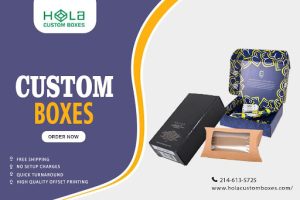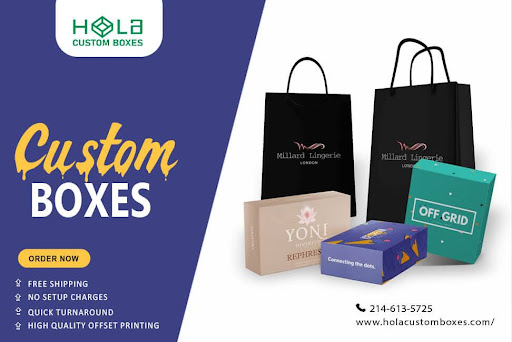In 2025, the landscape of incense packaging will be shaped by evolving consumer preferences and environmental considerations. Businesses will need to prioritize eco-friendly materials, such as biodegradable Kraft paper and recyclable cardboard, to capture the attention of environmentally conscious buyers. Moreover, the demand for personalized and culturally inspired designs will influence purchasing decisions. Exploring these trends reveals critical insights into the strategies that will define success in this competitive market. What specific elements will drive these packaging innovations?
Main Points
- Eco-friendly packaging using biodegradable Kraft paper and recyclable materials appeals to the growing consumer demand for sustainability in 2025.
- Personalized incense boxes with names or messages foster customer loyalty and enhance perceived value through customization.
- Unique shapes and vibrant graphics will differentiate products on shelves, making them more attractive to consumers seeking novelty.
- Incorporating interactive elements like QR codes or augmented reality enhances consumer engagement and provides deeper product insights.
- Cultural influences in design, such as traditional motifs and local artwork, create authenticity and strengthen brand connections with diverse consumer bases.
Emphasizing Sustainability in Incense Packaging

As consumers increasingly demand eco-friendly products, brands in the incense industry are turning to sustainable packaging solutions to align with this trend.
Sustainable incense packaging materials, including biodegradable Kraft paper and recyclable cardboard, are gaining traction. Packaging design that incorporates minimalistic aesthetics reduces material usage while appealing to consumer preferences for simplicity.
Utilizing plant-based inks further enhances the natural appeal, reinforcing the brand’s commitment to sustainability. Custom incense packaging boxes can feature techniques like window patching and embossing, offering visual allure without compromising eco-friendliness. Additionally, using custom Kraft boxes ensures that the packaging is both durable and eco-friendly, aligning with the values of environmentally conscious consumers.
Incorporating plant-based inks and creative design techniques elevates custom incense packaging while maintaining eco-friendly principles.
Emphasizing sustainability in marketing is vital, as 66% of global consumers are willing to pay a premium for sustainable brands.
Personalization and Customization Options
While many brands in the incense industry focus on traditional packaging methods, a growing emphasis on personalization and customization options is reshaping consumer engagement.
Custom incense boxes featuring personalized names or messages enhance customer loyalty by fostering a personal connection. Utilizing eco-friendly materials in these designs aligns with market trends, appealing to environmentally conscious consumers.
Custom design options, such as unique shapes and vibrant graphics, differentiate products on shelves. Incorporating tactile features like window patching or embossing elevates the premium feel.
Moreover, limited edition packaging creates urgency and exclusivity, driving sales among consumers seeking unique experiences. Additionally, offering custom specifications allows brands to tailor packaging to their specific product needs, further enhancing customer satisfaction.
Innovative Design Trends in Incense Packaging
Innovative design trends in incense packaging are increasingly driven by consumer preferences for sustainability and unique aesthetics. Brands are adopting eco-friendly materials like Kraft paper and biodegradable options, while also exploring custom printed packaging that enhances product differentiation. Innovative designs incorporate sensory elements, such as soft-touch coatings and vibrant prints, to engage consumers. Storytelling through artistic visuals and emotive language is becoming essential for brand connection. Furthermore, technology integration, such as QR codes, provides customers with deeper insights into luxury incense and fragrance oils.
| Feature | Trend | Benefit |
| Material | Eco-friendly options | Sustainability appeal |
| Shape | Unique designs | Differentiation |
| Aesthetic | Soft-touch coatings | Enhanced sensory experience |
| Technology | QR codes | Enhanced engagement |
Interactive Packaging Elements for Consumer Engagement
The evolution of incense packaging has progressed beyond aesthetic appeal to incorporate interactive elements that greatly enhance consumer engagement.
Integrating interactive packaging elements, such as QR codes, allows consumers to access supplementary content like meditation guides, elevating their experience. Augmented reality features can visualize the incense’s aroma or rituals, deepening product connection.
Interactive packaging, like QR codes and augmented reality, enriches the incense experience, connecting consumers to deeper rituals and content.
Custom packaging options increase personalization, making the product more attractive. Tactile elements, like textured finishes or scent-infused materials, create a multi-sensory experience.
Additionally, user-generated content prompts encourage customers to share their experiences, fostering community engagement and aligning with effective marketing strategies to strengthen brand loyalty.
Cultural Influences in Packaging Design
Cultural influences greatly shape the design of incense packaging, as traditional motifs and color schemes resonate with specific cultural practices and beliefs. Incorporating local artwork enhances authenticity, appealing to consumers seeking uniqueness. Eco-friendly materials reflect a cultural consciousness toward sustainability, aligning with environmentally responsible values. Symbolism in colors can evoke emotions, increasing perceived value and consumer attraction. Moreover, integrating cultural narratives fosters brand loyalty by creating deeper connections with consumers while promoting the spiritual benefits associated with incense.
| Cultural Element | Design Features | Consumer Impact |
| Motifs | Traditional patterns | Emotional resonance |
| Color Schemes | Symbolic hues | Enhanced attractiveness |
| Local Artwork | Unique craftsmanship | Authenticity |
| Eco-Friendly Materials | Sustainable options | Environmental alignment |
| Cultural Narratives | Story-driven packaging | Brand loyalty |
Eco-Friendly Materials for Incense Packaging
In recent years, the demand for eco-friendly materials in incense packaging has surged, reflecting a broader consumer shift towards sustainability.
Brands increasingly adopt sustainable options such as recycled cardboard and biodegradable Kraft paper, appealing to environmentally conscious consumers. The use of plant-based inks further reduces carbon footprints, ensuring safety for both users and the environment.
Brands are embracing recycled cardboard and biodegradable Kraft paper, appealing to eco-conscious consumers while minimizing environmental impact.
Incorporating compostable materials and minimalistic designs not only enhances packaging appeal but also supports a zero-waste lifestyle.
Studies show that over 70% of consumers prefer products with sustainable packaging, making eco-friendly choices essential for attracting a larger customer base and promoting responsible consumption.
Storytelling Through Packaging Design
While many brands focus solely on product quality, effective storytelling through packaging design offers a unique opportunity to engage consumers on a deeper level.
By integrating narratives that reflect the brand’s heritage and the cultural significance of incense, packaging can enhance consumer engagement. Visual elements depicting natural ingredients or cultural rituals create emotional connections, while eco-friendly materials communicate sustainability and responsibility.
Custom designs featuring unique patterns and colors evoke specific memories tied to scents. This strategic approach not only elevates perceived value but also fosters brand loyalty, as consumers gravitate toward products aligning with their personal values and experiences.

